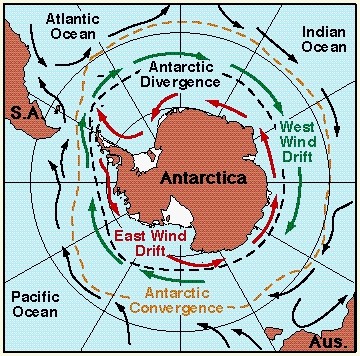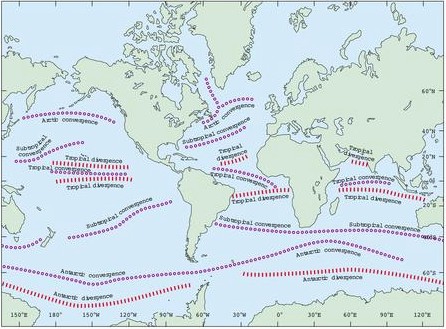Antarctic Circulation Pattern

- Zones of surface convergence and divergence mark regions of sinking and rising water; driving force is Coriolis effect
- Convergence = two water masses flow towards each other, water is subducted: downwelling
- Divergence = two water masses flow apart from each other, water from depth replaces surface water: upwelling
- Upwelling brings oxygen and nutrients into surface layer
- Surface convergence occurs at:
- 0° in the tropical convergence,
- 30°–40°N & S in the subtropical convergence
- 50°N&S in the Arctic & Antarctic convergence
- Surface divergence occurs in three areas:
- on either side of the tropical convergence
- in the Antarctic divergence

- Oceanic divergence and convergence zones are sites of vertical water mass transport
- Significance: Vertical transport of nutrients, oxygen, CO2, heat
- Deep-sea currents are globally connected

Water Masses in the Atlantic Ocean
